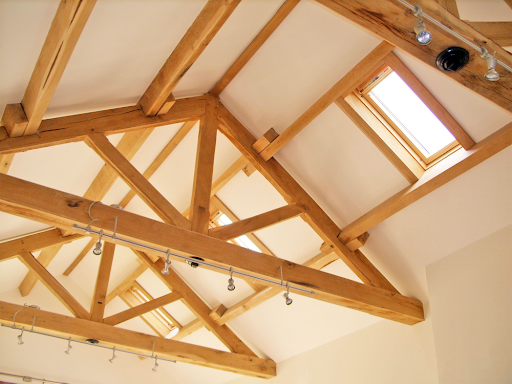
Sydney’s architectural realm has long been a canvas for creative invention, and its building industry remains at the forefront of innovation. Architectural joinery has emerged as a dynamic force driving aesthetics and functionality in this ever-evolving landscape. As we peer into the future, a fascinating fusion of trends and innovations is poised to reshape architectural joinery in Sydney, offering a glimpse into the city’s forthcoming structural marvels.
Integration of technology:
Technology’s profound impact on diverse sectors reverberates within architectural joinery in Sydney. Integrating cutting-edge tools like computer-aided design (CAD) software and 3D printing has transformed the conceptualisation and execution of joinery projects. CAD empowers architects and designers to craft intricate joinery designs with unparalleled precision. At the same time, 3D printing unlocks new realms of creativity by allowing for the production of complicated prototypes and custom joinery elements.
Sustainable practices:
The sustainability ethos is weaving intricately through Sydney’s architectural joinery landscape. A surge in environmentally-conscious practices is witnessed as reclaimed wood, and recycled materials find their way into joinery designs. This trend embeds history and character into spaces and reduces waste. The rise of energy-efficient manufacturing techniques and eco-friendly finishes further underscores the commitment to a greener future.
Seamless integration and multi-functionality:
In an era where spatial efficiency is paramount, Sydney’s architectural joinery embraces a seamless integration and multi-functionality ethos. Custom joinery solutions blend storage, lighting, and technology seamlessly, crafting unobtrusive yet multifaceted design elements. This trend exceeds residential domains, permeating commercial and public spaces with adaptable joinery that changes according to functional demands, whether folding partitions or modular seating arrangements.
Artisanal craftsmanship:
Amidst the digital renaissance, the allure of artisan craftsmanship remains unswayed. Architectural joinery pays homage to heritage techniques, celebrating the beauty of handmade elements. Custom-made, hand-carved details evoke a sense of authenticity, acting as functional pieces of art that imbue spaces with a timeless allure. This revival of artisanal craftsmanship bridges the gap between tradition and modernity, enriching the narrative of architectural spaces.
Smart integration and IoT connectivity:
The rise of the Internet of Things (IoT) has opened a realm of possibilities within architectural joinery in Sydney. Smart integration is on the ascent, with joinery elements seamlessly incorporating IoT connectivity. From intelligent lighting systems that adapt to natural light variations to joinery pieces embedded with sensors that respond to user interactions, a new era of interactive and responsive architectural elements is dawning.
Biophilic design harmonisation:
Architectural joinery embraces the biophilic design ethos, forging a harmonious relationship between nature and built environments. Integrating natural elements such as wood, plants, and water into woodwork designs fosters a sense of serenity and connection. The trend enhances aesthetics and contributes to the occupants’ well-being by creating spaces that resonate with the innate human affinity for nature.
Cultural fusion and global aesthetics:
As a melting pot of cultures, architectural joinery is set to be enriched by a tapestry of global aesthetics. The city’s various influences are poised to shape joinery designs that reflect a fusion of artistic styles, materials, and techniques worldwide. This trend opens doors to cross-cultural collaborations, resulting in woodwork pieces that are not only visually captivating but also embody the spirit of interconnectedness.
Hyper-personalisation and customisation:
To create truly unique spaces, hyper-personalisation and customisation are gaining traction within the architectural joinery sphere. From tailor-made furniture that fits seamlessly into specific nooks to woodwork elements designed to align with individual preferences, this trend celebrates individuality, allowing spaces to tell stories that are distinctly their own.
Acoustic innovation:
In a metropolitan landscape of noise pollution, acoustic innovation is integral to architectural joinery in Sydney. Woodworking elements are designed with acoustic properties, seamlessly integrating sound-absorbing materials and techniques. These innovations contribute to more peaceful and serene indoor environments, enhancing comfort and well-being.
Material exploration:
The palette of materials available to architectural joinery expands, giving rise to experimentation and creative expression. Beyond wood, designers are exploring the fusion of glass, metal, concrete, and even uncommon mediums like recycled plastics. This trend enlarges design horizons and presents opportunities for sustainable practices by repurposing materials imaginatively.
Dynamic interactive surfaces:
Architectural joinery is venturing into the realm of dynamic interactive surfaces. Imagine joinery elements responding to touch, gesture, or voice commands. These surfaces could serve as versatile tools for information display, entertainment, or workspace adjustments, adding an innovative layer of functionality to interior spaces.
Virtual and augmented reality integration:
The source of virtual and augmented reality technologies is poised to revolutionise architectural joinery. Designers could use VR and AR to offer clients immersive walkthroughs of woodworking concepts, enabling them to experience and modify designs in real time. This technology-driven approach enhances client engagement and empowers more informed decision-making.
Regenerative design philosophy:
The regenerative design philosophy is expected to influence Sydney’s architectural joinery practices. This approach aims to restore and renew ecosystems through design, pushing joinery to be sustainable and actively beneficial to the environment. Joinery pieces could incorporate elements that contribute to biodiversity, energy efficiency, and ecological restoration.
Embracing modular and prefabrication methods:
Modular and prefabrication methods are gaining traction in architectural joinery for their efficiency and flexibility. Joinery components could be fabricated off-site, ensuring higher quality control and reducing construction time on-site. This approach aligns with the growing need for streamlined construction processes in a rapidly-evolving urban environment.
Conclusion: A vibrant evolution
As the architectural landscape of Sydney continues to evolve, so does its joinery industry. The convergence of technology, sustainability, functionality, and artistry is weaving a captivating narrative that shapes the future of architectural joinery in Sydney. From seamlessly integrated smart designs to handcrafted elements that evoke a sense of tradition, Sydney’s building industry is primed to create spaces that are not only visually breathtaking but also profoundly resonant with the needs and desires of its inhabitants. As each joinery piece finds its place within the city’s urban tapestry, it contributes to the vibrant evolution of Sydney’s architectural identity.
